Welcome to an exploration of sprinkles nutritional information and how it can help you make healthier choices when indulging in desserts.
Sprinkles, those colorful little toppings that add a touch of joy to our desserts, may seem innocent and delightful. However, understanding their nutritional composition is crucial in making informed choices for a healthier dessert culture.
Sprinkles are made from a combination of corn syrup, sugar, cornstarch, wax, and artificial flavors and colors. These small and shiny confections are shaped into long strands and coated with food coloring and a sugar glaze.
Nutritionally, sprinkles are high in sugar, carbohydrates, and calories. It’s important to note that just two tablespoons of chocolate-flavored sprinkles can contain 107 calories and 13 grams of sugar. Excessive sugar intake has been associated with various health conditions, such as obesity, diabetes, and heart disease.
But fear not, there are ways to enjoy sprinkles while making healthier choices. You can take matters into your own hands by making homemade sprinkles using ingredients like shredded coconut, sweeteners, egg whites, and arrowroot starch. Creating your own sprinkles allows you to control the ingredients and reduce your sugar intake. Plus, it can be a fun and rewarding activity!
In addition to sprinkles, there are other foods that have zero nutritional value and should be consumed in moderation or avoided altogether. Some examples include cream soda, low-fat peanut butter, margarine, fruit canned in syrup, ice pops, cotton candy, frosting, sugary coffee drinks, white bread, white chocolate, salt pork, energy drinks, General Tso’s chicken, American cheese, pork rinds, and processed snacks.
To embrace a healthier dessert culture, it’s essential to read ingredient labels and choose products with natural ingredients. The more we understand the nutritional content of the foods we consume, the better equipped we are to make meaningful choices for our overall health and well-being.
Key Takeaways:
- Understanding sprinkles’ nutritional information is crucial for making healthier dessert choices.
- Sprinkles are high in sugar, carbs, and calories, which can have negative effects on our health.
- Making homemade sprinkles allows you to control ingredients and reduce sugar intake.
- Avoiding foods with zero nutritional value is important for maintaining a healthy diet.
- Reading ingredient labels and choosing natural ingredients contributes to overall well-being.
Understanding the Ingredients in Sprinkles
Let’s take a closer look at the ingredients that make up those tiny, colorful sprinkles we love to top our desserts with. Sprinkles are made from a combination of corn syrup, sugar, cornstarch, wax, and artificial flavors and colors. These ingredients are shaped into long strands and then sprayed with food coloring and a sugar glaze.
In terms of nutritional content, sprinkles are high in sugar, carbs, and calories. Just 2 tablespoons of chocolate-flavored sprinkles contain 107 calories and 13 grams of sugar. Consuming excessive amounts of sugar has been linked to various health conditions, including obesity, diabetes, and heart disease.
To make healthier choices, you can consider making your own sprinkles at home using alternative ingredients. For example, you can use shredded coconut, sweeteners such as honey or maple syrup, egg whites, and arrowroot starch. Homemade sprinkles can be dyed using natural food coloring, dried, baked, or dehydrated, and they can be added to a variety of dishes. By making your own sprinkles, you have more control over the ingredients and can reduce your sugar intake.
| Foods with Zero Nutritional Value |
|---|
| Cream soda |
| Low-fat peanut butter |
| Margarine |
| Fruit canned in syrup |
| Ice pops |
| Cotton candy |
| Frosting |
| Sugary coffee drinks |
| White bread |
| White chocolate |
| Salt pork |
| Energy drinks |
| General Tso’s chicken |
| American cheese |
| Pork rinds |
| Processed snacks |
It’s important to note that sprinkles are not the only food with little to no nutritional value. There are several other options that should be consumed in moderation or avoided altogether. Some examples include cream soda, low-fat peanut butter, margarine, fruit canned in syrup, ice pops, cotton candy, frosting, sugary coffee drinks, white bread, white chocolate, salt pork, energy drinks, General Tso’s chicken, American cheese, pork rinds, and processed snacks.
To make healthier choices, it’s essential to read ingredient labels and opt for products with natural ingredients. By being mindful of the nutritional content of the foods we consume and limiting added sugars, fats, and artificial additives, we can make informed decisions that support our overall health and well-being.
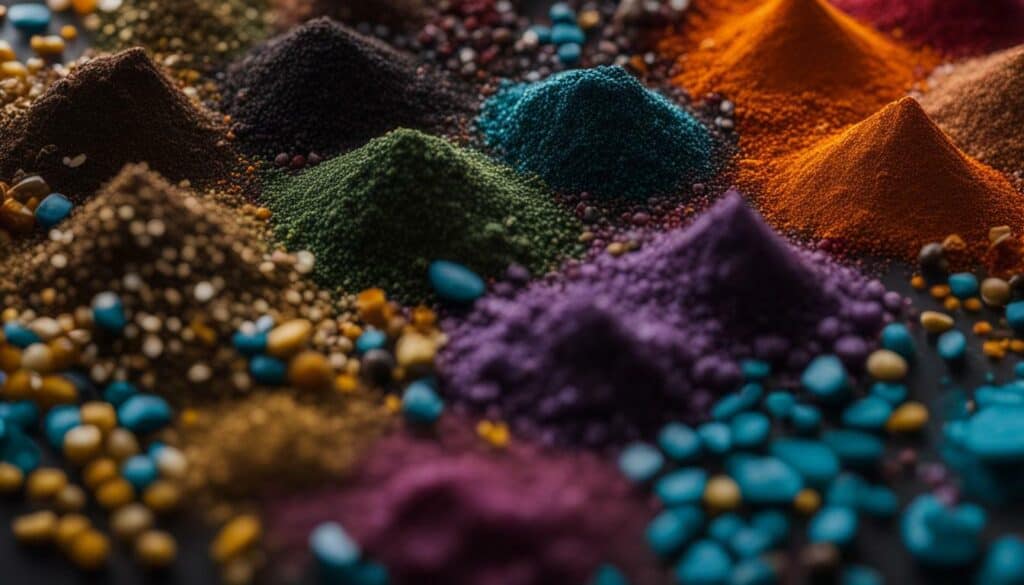
In summary, sprinkles are made from corn syrup, sugar, cornstarch, wax, and artificial flavors and colors. They are high in sugar, carbs, and calories. However, you can make healthier choices by making your own sprinkles at home using alternative ingredients and reducing your sugar intake. Remember to read ingredient labels, choose products with natural ingredients, and limit added sugars, fats, and artificial additives for better overall health and well-being.
The Nutritional Composition of Sprinkles
Before sprinkling those colorful treats on your dessert, it’s essential to understand their nutritional composition. Sprinkles, often used as a decorative touch, may seem harmless, but they can significantly impact your overall health and well-being. Let’s take a closer look at the nutritional information and calories in sprinkles.
| Nutrient | Amount per serving |
|---|---|
| Calories | 107 |
| Sugar | 13g |
| Carbohydrates | 14g |
| Fat | 1g |
Just 2 tablespoons of chocolate-flavored sprinkles contain 107 calories and 13 grams of sugar. These numbers may seem small, but they can quickly add up, especially if you’re fond of sprinkling them generously. Consuming too much sugar is associated with various health conditions, including obesity, diabetes, and heart disease. It’s important to be mindful of your sprinkles consumption to avoid exceeding your daily sugar intake.
To make healthier choices, consider making your own sprinkles at home using natural ingredients. Instead of using store-bought sprinkles that are high in sugar and artificial additives, you can use ingredients like shredded coconut, sweeteners, egg whites, and arrowroot starch. This allows you to have control over the ingredients and reduce your overall sugar intake while still enjoying that colorful sprinkle effect on your desserts.
Zero Nutritional Value Foods to Limit or Avoid
- Cream soda
- Low-fat peanut butter
- Margarine
- Fruit canned in syrup
- Ice pops
- Cotton candy
- Frosting
- Sugary coffee drinks
- White bread
- White chocolate
- Salt pork
- Energy drinks
- General Tso’s chicken
- American cheese
- Pork rinds
- Processed snacks
Aside from sprinkles, it’s important to be mindful of other foods that have zero nutritional value and should be consumed in moderation or avoided altogether. These foods often contain excessive amounts of sugar, unhealthy fats, and artificial additives, which can have negative effects on your health. By limiting or avoiding these foods, you can make healthier choices that support your overall well-being.
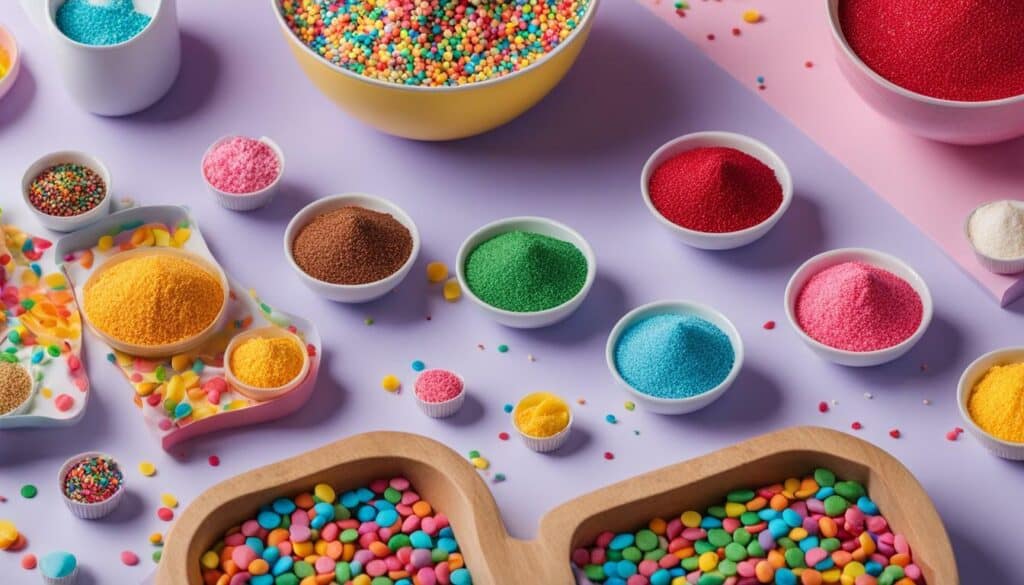
Making informed decisions about the foods we consume is key to promoting a healthier dessert culture. Prioritizing natural ingredients, reading ingredient labels, and limiting added sugars, fats, and artificial additives can significantly impact our overall health and well-being. By understanding the nutritional composition of sprinkles and other foods, we can make choices that align with our goals for a healthier lifestyle.
Making Healthier Choices with Homemade Sprinkles
Want to reduce your sugar intake while still enjoying sprinkles? Discover the benefits of making your own at home. Homemade sprinkles offer a healthier alternative to store-bought ones, allowing you to control the ingredients and reduce your sugar consumption. By using wholesome ingredients and natural sweeteners, you can indulge in the joy of colorful sprinkles without compromising your health.
To make homemade sprinkles, you can start with a base of shredded coconut and add your desired sweetener, such as honey or maple syrup. Mix in some egg whites to bind the ingredients together and a touch of arrowroot starch to create the desired texture. Shape the mixture into long strands, just like traditional sprinkles, and let them dry. You can also bake or dehydrate them for a crispy finish.
Once your homemade sprinkles are ready, you can use them to add a burst of color and flavor to a variety of dishes. They can be sprinkled over cupcakes, ice cream, yogurt, smoothie bowls, and even cereal. Get creative and experiment with different flavors and colors by adding extracts, natural food dyes, or freeze-dried fruit powders to your sprinkle mixture.
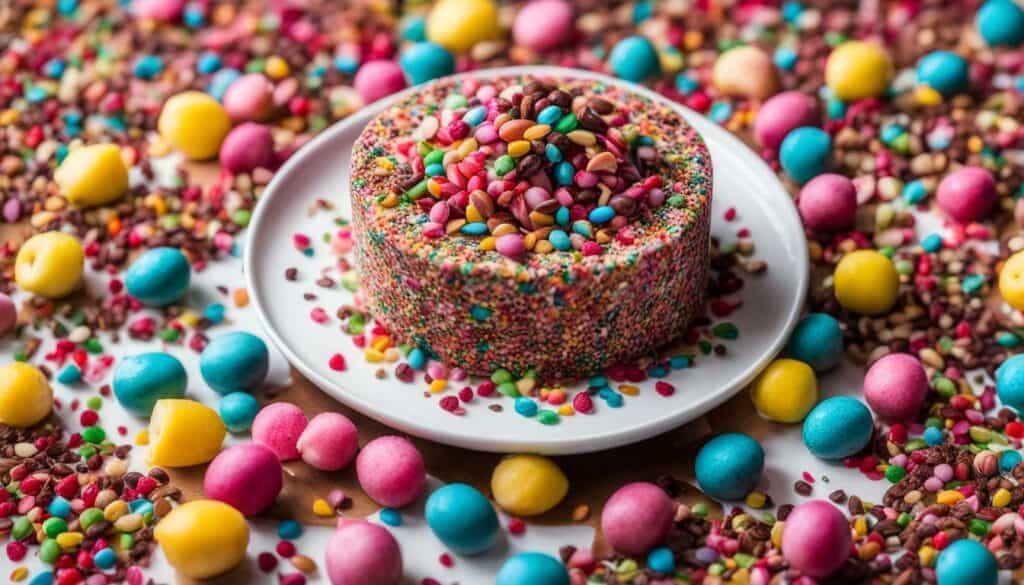
Store-bought sprinkles often contain high amounts of added sugar, artificial colors, and other additives. By making your own sprinkles at home, you can prioritize your health and well-being while still enjoying the fun and delightful touch that sprinkles bring to your desserts. By reducing your sugar intake and opting for natural ingredients, you can savor the sweetness guilt-free.
Making healthier choices doesn’t mean sacrificing taste or joy. With homemade sprinkles, you can create beautiful and delicious treats that align with your dietary preferences and goals. So, why not give it a try? Get creative in your kitchen and embark on a journey of healthier dessert options with homemade sprinkles!
Zero Nutritional Value Foods to Limit or Avoid
Sprinkles aren’t the only treat with minimal nutritional value – let’s take a look at other foods to be mindful of. These foods lack essential nutrients and can contribute to weight gain and various health issues when consumed in excess. By limiting or avoiding these foods, we can prioritize healthier choices and improve our overall well-being.
Here are some examples of foods that have zero nutritional value:
| Food | Nutritional Value |
|---|---|
| Cream Soda | No nutritional value, high sugar content |
| Low-fat Peanut Butter | Minimal nutrients, added sugars, and unhealthy fats |
| Margarine | Little to no nutritional value, high in trans fats |
| Fruit Canned in Syrup | Added sugars, lack of natural nutrients |
| Ice Pops | No nutritional value, high in sugar and artificial additives |
| Cotton Candy | Empty calories, high sugar content |
| Frosting | High sugar content, unhealthy fats |
These are just a few examples, but it’s important to be aware of the nutritional content of the foods we consume. By reading ingredient labels and opting for natural ingredients, we can make healthier choices. Limiting added sugars, fats, and artificial additives is also crucial for maintaining a balanced diet. Taking small steps towards a healthier lifestyle can have a big impact on our overall health and well-being.
Remember, it’s okay to enjoy these treats in moderation, but being mindful of their nutritional value can help us make informed decisions about our diet. By prioritizing nutritious foods and reducing our intake of foods with zero nutritional value, we can support our health and lead a more vibrant life.
Making informed choices about the foods we consume starts with reading and understanding ingredient labels. By taking the time to carefully examine the ingredients listed on packaged foods, we can gain valuable insights into their nutritional content and make decisions that align with our health goals.
In today’s world, there are countless food products available to us, each claiming to be healthy or natural. However, not all of these claims hold true. Reading ingredient labels allows us to see beyond the marketing tactics and truly understand what we are putting into our bodies.
When reading ingredient labels, it is important to look out for certain red flags. Avoid foods that contain artificial additives, such as preservatives, artificial sweeteners, and food coloring. Instead, opt for products that use natural ingredients and are minimally processed.
“Reading ingredient labels allows us to see beyond the marketing tactics and truly understand what we are putting into our bodies.”
By focusing on real, whole foods, we can ensure that our diet is filled with nutrients and avoid unnecessary additives that may negatively impact our health. This simple act of reading ingredient labels empowers us to make choices that support our well-being and long-term vitality.
Table: Ingredients to Avoid
| Artificial Additives | Description |
|---|---|
| Preservatives | Chemical compounds added to food to prevent spoilage. |
| Artificial sweeteners | Substitutes for sugar that are often chemically processed. |
| Food coloring | Dyes used to enhance the appearance of food. |
Being mindful of the ingredients in the foods we consume is an essential step towards making healthier choices. By reading labels, we can make informed decisions that prioritize our health and well-being. So the next time you go grocery shopping, don’t forget to take a closer look at the ingredient labels!
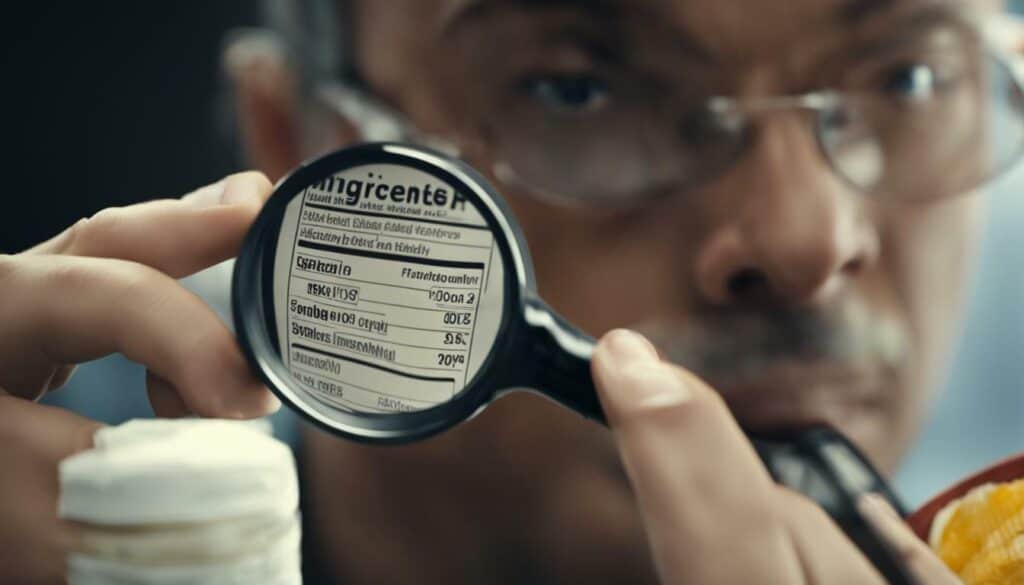
By being mindful of our intake of added sugars, fats, and artificial additives, we can make healthier choices. One way to achieve this is by reducing our consumption of processed foods that are often loaded with these unhealthy ingredients. These include sugary snacks, deep-fried foods, and heavily processed meals.
When it comes to added sugars, it’s important to note that they can be hidden in many foods, even those that may not taste particularly sweet. Common culprits include soda, sports drinks, fruit juices, candy, and even condiments like ketchup. Checking food labels for added sugars and opting for products with no or low added sugars can help us reduce our overall intake.
Fats are another factor to consider. While our bodies do need healthy fats for proper function, it’s important to avoid excessive consumption of unhealthy fats, such as trans fats and saturated fats. Processed snacks, fried foods, and baked goods are often high in these fats. Opting for healthier fats found in nuts, avocados, and olive oil can be a better choice for our overall health.
Finally, artificial additives, such as artificial sweeteners, flavors, and colors, can be found in many processed foods. While they may enhance the taste or appearance of the food, they offer little to no nutritional value. It’s best to choose foods with natural ingredients and flavors whenever possible to avoid unnecessary exposure to artificial additives.
Table: Foods to Limit or Avoid
| Food | Reason to Limit or Avoid |
|---|---|
| Cream soda | High in added sugars and artificial flavors |
| Low-fat peanut butter | Often contains added sugars and unhealthy fats |
| Margarine | High in trans fats, which are detrimental to heart health |
| Fruit canned in syrup | Loaded with added sugars and lacks the natural nutrients found in fresh fruit |
| Ice pops | High in added sugars and artificial flavors |
| Cotton candy | Pure sugar with no nutritional value |
| Frosting | High in added sugars and trans fats |
| Sugary coffee drinks | Packed with added sugars, unhealthy fats, and artificial additives |
| White bread | Lacks fiber and often contains added sugars and preservatives |
| White chocolate | High in added sugars and unhealthy fats |
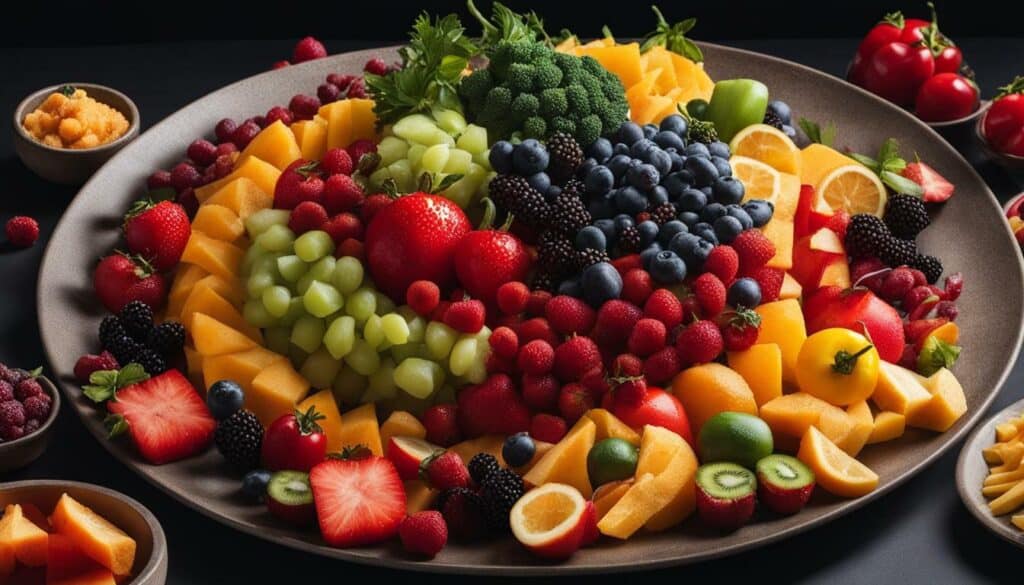
By taking steps to limit our intake of added sugars, unhealthy fats, and artificial additives, we can make significant progress towards a healthier lifestyle. Reading food labels, choosing natural ingredients, and preparing homemade meals can empower us to make informed decisions and prioritize our overall well-being.
Supporting Overall Health and Well-being
When we prioritize our nutritional choices, we contribute to our overall health and well-being. Making conscious decisions about the foods we consume can have a significant impact on our physical and mental well-being. By opting for nutritious ingredients and avoiding those that provide little to no nutritional value, we nourish our bodies and provide the fuel needed for optimal functioning.
To support our overall health, it is important to read ingredient labels carefully. This allows us to understand the components of the products we are purchasing and make informed choices. Look for natural ingredients and avoid products that contain artificial flavors, colors, and additives. By choosing foods with minimal processing and additives, we can ensure that we are consuming substances that are closer to their original form, providing us with essential nutrients.
Limiting the intake of added sugars, fats, and artificial additives is crucial for maintaining a healthy lifestyle. Added sugars, often found in processed foods and beverages, can lead to weight gain, increased risk of chronic diseases, and negative effects on our energy levels. Instead, focus on incorporating whole foods such as fruits, vegetables, whole grains, lean proteins, and healthy fats into your diet. These choices provide essential nutrients and promote overall well-being.
By adopting a mindful approach to our dietary choices, we can embrace a healthier dessert culture. This means exploring alternatives to store-bought sprinkles and opting for homemade versions. Not only does making homemade sprinkles allow us to control the ingredients and reduce our sugar intake, but it also opens up a world of creativity and flavor combinations. Making conscious choices about our food can be enjoyable and rewarding, as we prioritize our health and well-being.
Table: Foods with Zero Nutritional Value
| Food | Description |
|---|---|
| Cream Soda | Soda flavored with vanilla or cream extracts but lacking any real nutritional value. |
| Low-fat Peanut Butter | A peanut butter variant that often contains added sugars and reduced levels of healthy fats. |
| Margarine | A butter substitute made from plant oils but usually contains trans fats and lacks nutritional benefits. |
| Fruit Canned in Syrup | Fruits preserved in sugary syrup, adding unnecessary calories and added sugars. |
| Ice Pops | Frozen treats high in sugar and artificial flavors, providing no real nutritional value. |
| Cotton Candy | A fluffy confection made entirely of spun sugar, devoid of nutrients. |
| Frosting | A sweet topping made from powdered sugar, butter, and flavorings that mainly provides empty calories. |

Let’s shift our dessert culture towards healthier choices without compromising on taste or enjoyment. Desserts can still be indulgent and satisfying while also being nutritious. By making conscious choices and incorporating healthier ingredients, we can transform our favorite treats into guilt-free delights.
One way to embrace a healthier dessert culture is by exploring alternative ingredients for our favorite sweets. Instead of using traditional sprinkles, which are often high in sugar and artificial additives, we can opt for healthier options. Try using natural decorations like crushed nuts, freeze-dried fruits, or dark chocolate shavings. These alternatives not only add texture and flavor but also provide added nutrients and antioxidants.
Another way to promote a healthier dessert culture is by experimenting with different recipes and techniques. There are countless recipes available that cater to various dietary needs and preferences. From vegan and gluten-free desserts to low-sugar and paleo-friendly options, there’s something for everyone. By expanding our culinary horizons, we can discover new flavors and create desserts that are both delicious and nourishing.
Let’s not forget the importance of portion control. While it’s tempting to indulge in large servings, moderation is key. By savoring smaller portions, we can still satisfy our sweet tooth without overindulging. Additionally, mindful eating practices such as savoring each bite and eating slowly can enhance our dessert experience and help us recognize when we’re truly satisfied.
Let’s make a conscious effort to embrace a healthier dessert culture. By incorporating nutritious ingredients, exploring new recipes, and practicing moderation, we can enjoy our favorite desserts guilt-free. Remember, dessert should be a treat that nourishes both our bodies and our souls. So, let’s indulge in healthier choices that bring us joy and promote overall well-being.
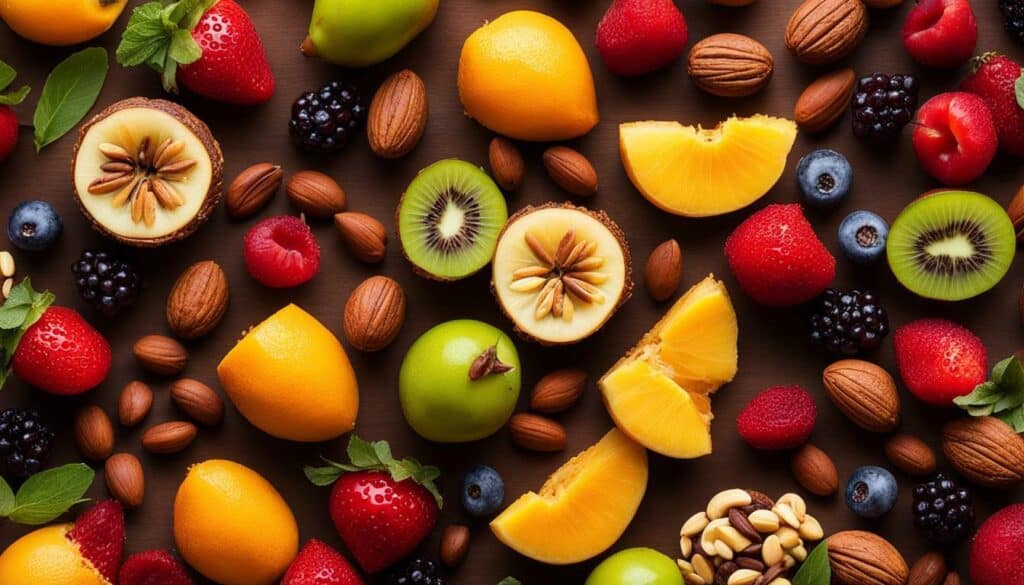
In conclusion, becoming aware of sprinkles’ nutritional information empowers us to make healthier dessert choices without sacrificing our love for sweets. Sprinkles, made from ingredients like corn syrup, sugar, and artificial flavors, are high in sugar, carbs, and calories. Consuming too much sugar can have negative effects on our health.
However, by making our own sprinkles at home using ingredients like shredded coconut, sweeteners, and arrowroot starch, we can control the ingredients and reduce our sugar intake. Homemade sprinkles can be customized, dried, baked, or dehydrated, and added to a variety of dishes, providing a healthier alternative to store-bought sprinkles.
In addition to being mindful of sprinkles, we should also pay attention to other foods that have zero nutritional value and should be consumed in moderation or avoided. These include soda, sugary coffee drinks, processed snacks, and white bread. Reading ingredient labels, opting for natural ingredients, and limiting added sugars, fats, and artificial additives are essential steps in making healthier choices for our overall health and well-being.
By understanding the nutritional composition of sprinkles and other foods, we can make informed decisions about our diet and embrace a healthier dessert culture. With a little creativity and conscious choices, we can indulge in our favorite treats while prioritizing our health. So next time you sprinkle some sweetness onto your dessert, remember that a little knowledge about its nutritional impact can go a long way in making better choices.
FAQ
Q: Are store-bought sprinkles unhealthy?
A: Store-bought sprinkles are high in sugar, carbs, and calories, making them less healthy options for desserts.
Q: Can I make my own sprinkles at home?
A: Yes, you can make your own sprinkles at home using ingredients like shredded coconut, sweeteners, egg whites, and arrowroot starch.
Q: How can homemade sprinkles be used?
A: Homemade sprinkles can be dyed, dried, baked, or dehydrated and added to a variety of dishes, giving you control over the ingredients and reducing your sugar intake.
Q: What are some other foods with zero nutritional value?
A: Other foods with zero nutritional value include cream soda, low-fat peanut butter, margarine, fruit canned in syrup, ice pops, cotton candy, frosting, sugary coffee drinks, white bread, white chocolate, salt pork, energy drinks, General Tso’s chicken, American cheese, pork rinds, and processed snacks.
Q: Why is reading ingredient labels important?
A: Reading ingredient labels helps you choose products with natural ingredients and avoid those with added sugars, fats, and artificial additives.
Q: How can I support my overall health and well-being?
A: By being mindful of the nutritional content of the foods you consume and making informed decisions, you can support your overall health and well-being.
Q: How can I embrace a healthier dessert culture?
A: Embrace a healthier dessert culture by making conscious choices, opting for homemade sprinkles, and reducing your consumption of sugary and unhealthy desserts.
What is the Nutritional Information of CarbQuik for Healthier Baking Alternatives?
CarbQuik is a popular choice for those seeking healthier baking alternatives. Unveiling the low-carb baking nutrition secrets, this product offers a unique blend of ingredients that mimics the taste and texture of traditional baked goods. With just two net carbs per serving, CarbQuik provides a guilt-free way to enjoy your favorite treats without compromising your dietary goals. It’s a game-changer for individuals following low-carb or keto diets, helping you satisfy your cravings while staying on track with your nutritional needs.

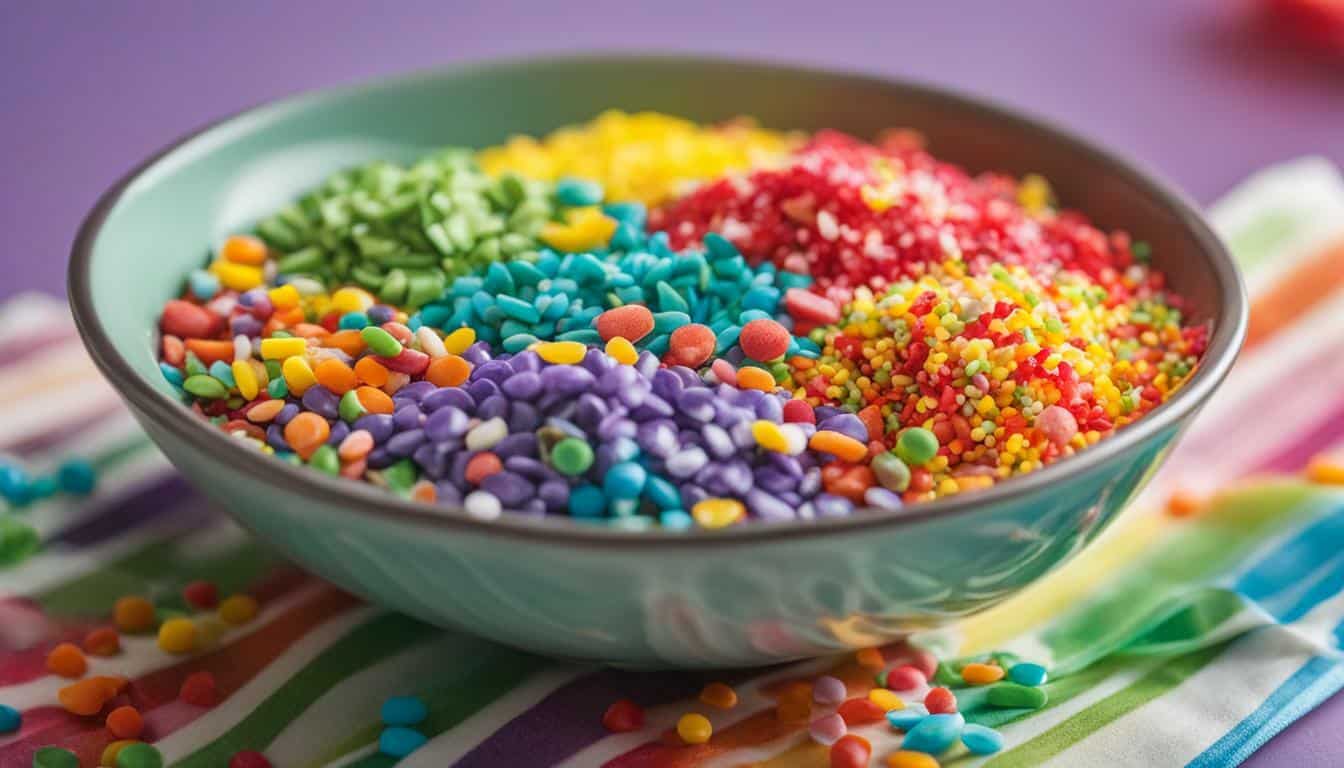
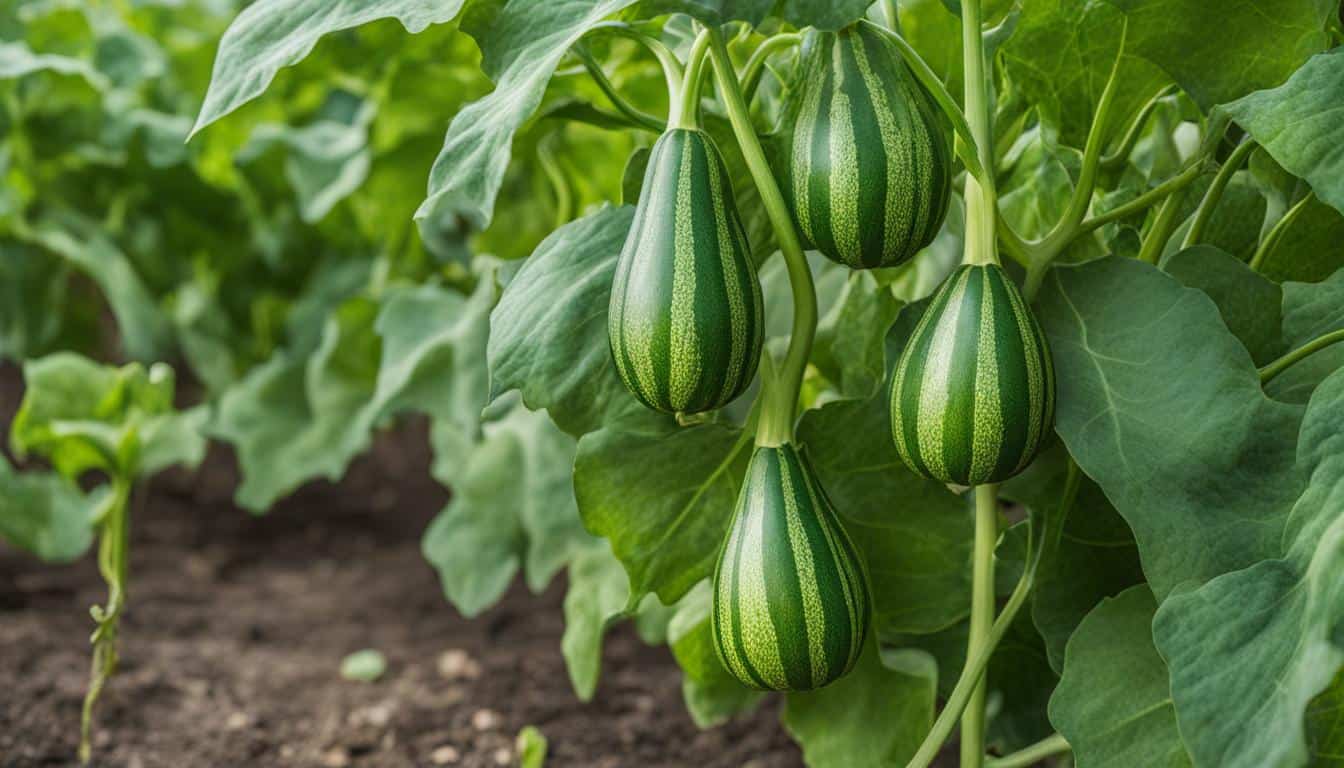
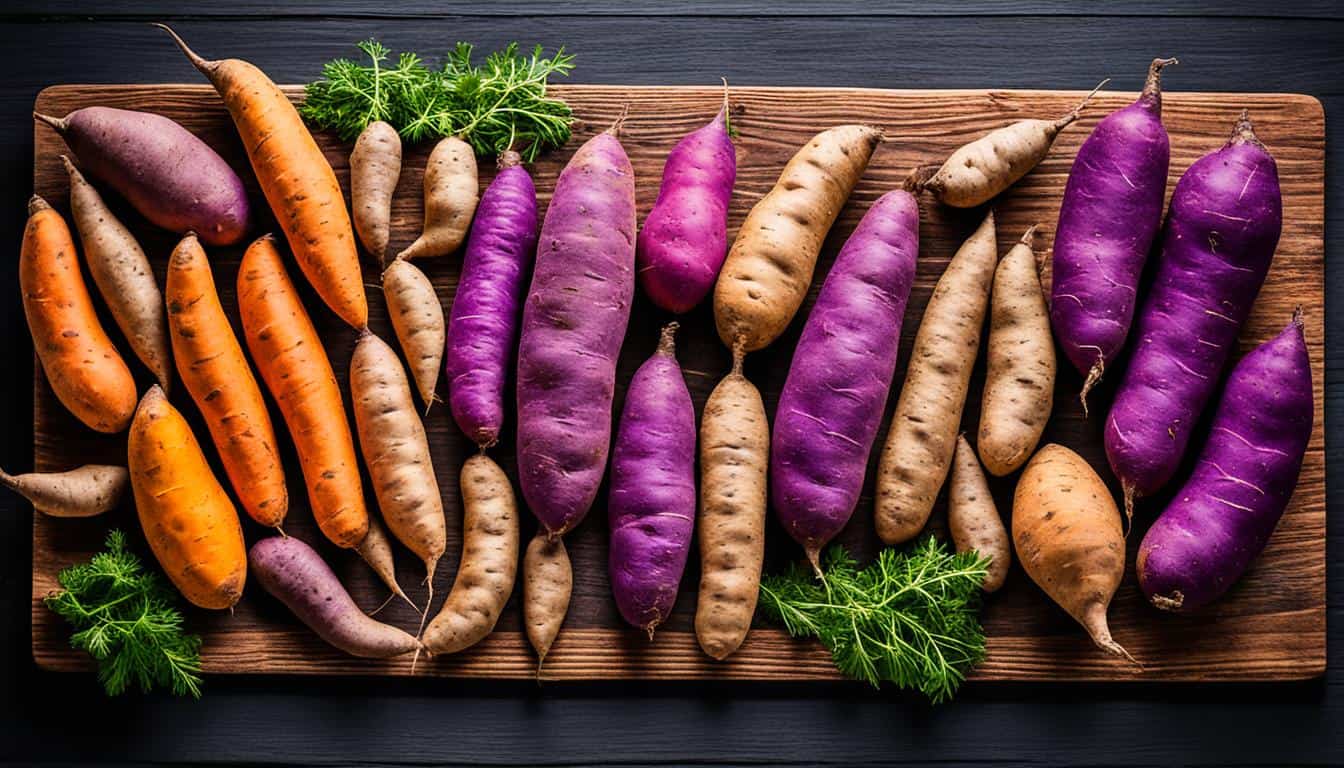
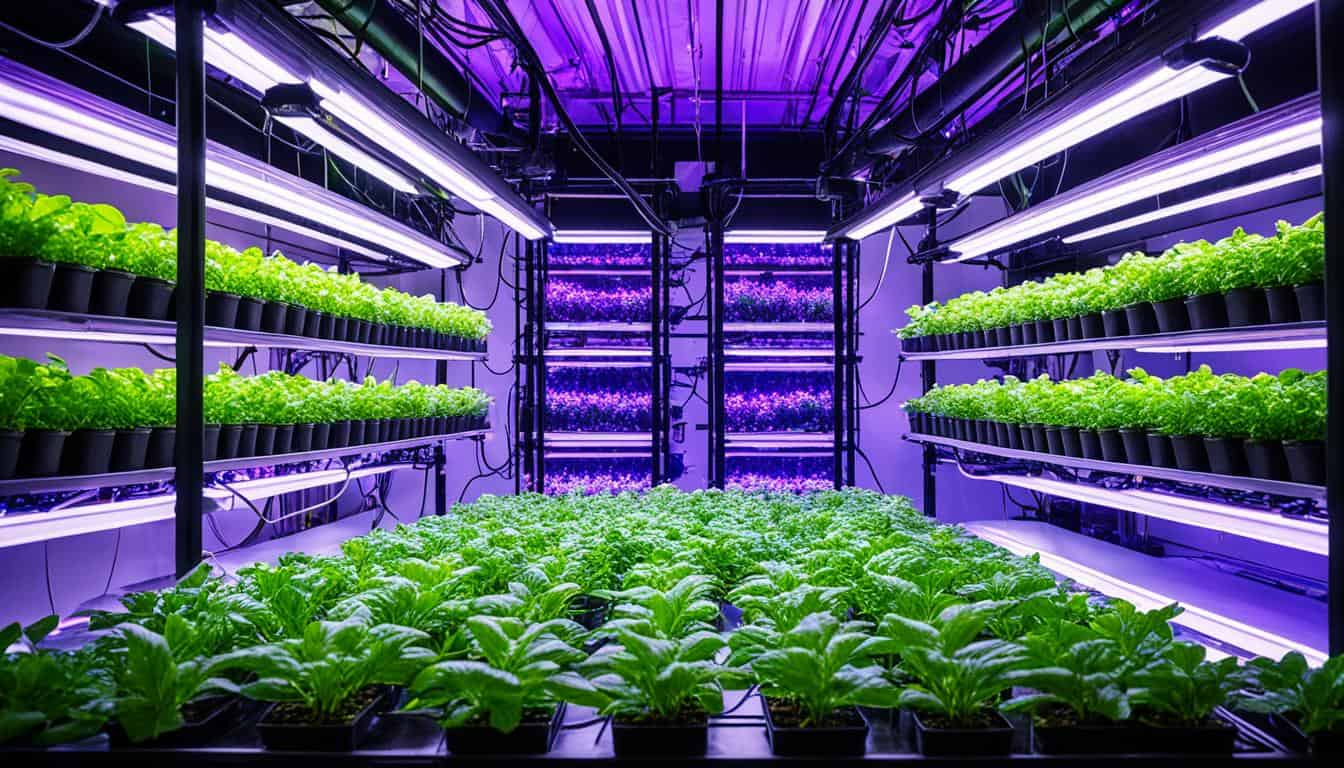
Leave a Reply